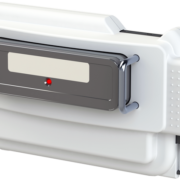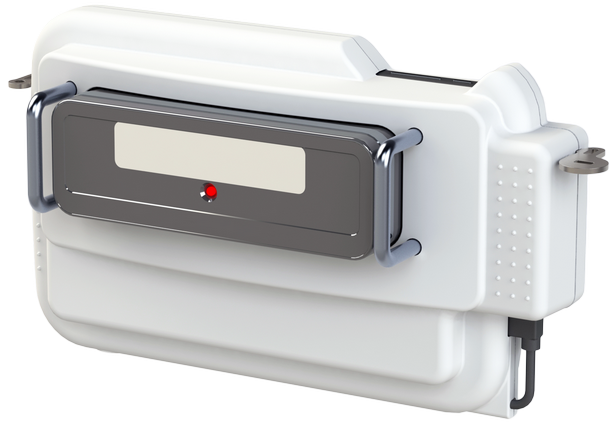Is Petitioning Congress the Answer to Achieving Accurate Patient ID?

Hat tip for the recent efforts by the American Health Information Management Association (AHIMA) to launch a petition drive that will move Congress to lift the federal legislative ban that has prohibited the U.S. Department of Health and Human Services (HHS) from participating in efforts to find a patient identification solution. It’s a noble effort and adds fuel to the hot fire burning in the industry to solve the persistent and dangerous problem of achieving accurate patient identification in healthcare. We understand that the effort to improve patient identification in healthcare has many downstream benefits to the entire industry including (but not limited to):
— Revenue cycle management
— Patient safety
— Health information exchange
— Population health

AHIMA’s efforts to petition Congress to life the federal moratorium on funding research on developing a national patient identifier may not do much to adequately solve the problem.
The fact that organizations with the clout of AHIMA and CHIME have contributed their powerful voices to the battle of improving patient ID in healthcare is advantageous to the end goal of finding a universal solution that can be adopted collectively throughout the industry. AHIMA and CHIME’s efforts are working to garner more attention to the persistent patient matching problem in healthcare and sparking more discussions about how to solve the problem. Often relegated as a back seat initiative in favor of other healthcare technology initiatives (e.g. – ICD-10, EHR implementation, interoperability), we have always believed that improving patient identification in healthcare should be higher on the priority list.
AHIMA’s initiative has merit, but is advocating the use of a credential predicated on the concept of presenting something you have or know the answer to solving the patient identification problem in healthcare? One of the reasons that the healthcare industry has struggled with accurate patient identification is that legacy methods of identifying patients have proven to be easy targets to exploit. Human identification generally falls into three distinct categories:
- “What you know” – address, phone number, date of birth
- “What you have” – insurance card, driver’s license, passport, government issued identity
- “Who you are” – biometrics
Traditional identification methods generally rely on asking a patient what they know or what they have but we already know that these are frequently abused and easy sources to commit fraud. Just look at the continued rise in cases of medical identity theft at the point of service – an estimated 2.3 million Americans or close family members had their identities stolen during or before 2014, and a large number of these cases involve family members stealing or sharing medical insurance credentials.
In geographic locations throughout the country where a large percentage of the patient demographic may share similar names, providing a false name or multiple variations of a name at the point of service in order to defraud the system is common. An example widely used throughout the industry to illustrate this is the Harris County Hospital District in Houston where among 3.5 million patients, there are nearly 70,000 instances where two or more patients shared the same last name, first name and date of birth. Among these were 2,488 different patients named Maria Garcia and 231 of those shared the same birth date.
In geographic locations throughout the country where a large percentage of the patient demographic may share similar names, providing a false name or multiple variations of a name at the point of service in order to defraud the system is common. An example widely used throughout the industry to illustrate this is the Harris County Hospital District in Houston where among 3.5 million patients, are were nearly 70,000 instances where two or more patients shared the same last name, first name and date of birth. Among these were 2,488 different patients named Maria Garcia and 231 of those shared the same birth date.
Pushing Congress to lift the federal moratorium on funding research on developing a national patient identifier may lead to a solution that requires patients who opt-in to bring this credential with them when seeking medical treatment. In the absence of incorporating an additional identification credential that relies on “who you are,” simply creating another individual authentication credential that relies on “what you know” or “what you have” leads us down the same path of abuse and fraud. After all, in theory the national patient identifier would be similar to a social security number or other credential that is subject to being stolen, shared, or swapped just like current methods of identification. Do we really want to allow this to happen? Seems as if this solution would be the equivalent or rearranging the deck chairs on the Titanic.
Moving forward, the smarter way to solve the identification crisis in healthcare is to adopt technology that identifies patients by who they are, or some sort of a combination of what you have or what you know with who you are. For example, the use of biometrics for patient identification – already a proven technology that patients accept and significantly reduces duplicate medical records, overlays, medical identity theft, and fraud – would be a more sensible way to identify patients to alleviate the problems caused by misidentification.
Lobbying Congress to lift the moratorium on funding research to develop a national patient identifier won’t solve the patient ID problem in healthcare unless the industry realizes that it must move away from antiquated identification methods that rely on what you have and/or what you know and instead shift to identifying patients by who they are. Unless this is part of the equation, healthcare will continue to spin it’s wheels in the effort to solve the vexing problem of how to achieve 100% accurate patient identification.




























